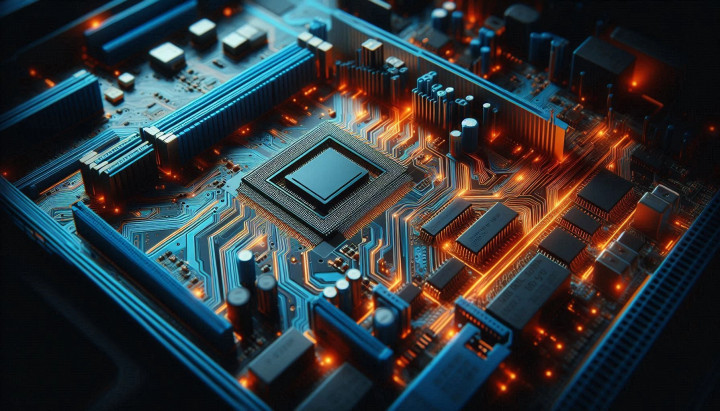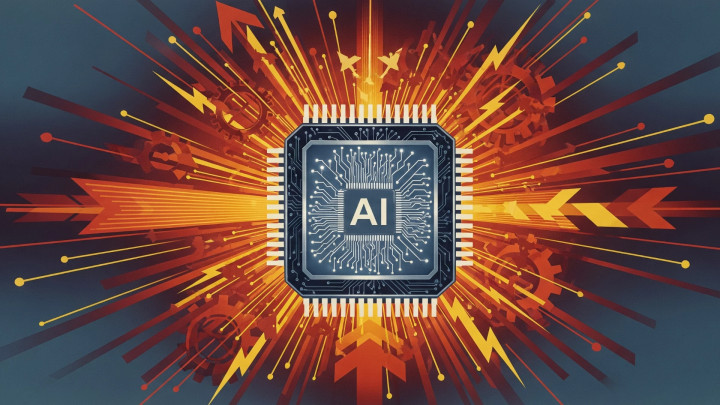USB, PCIe, and AGP Connection Speeds
Data transfer speed plays a crucial role in the performance of modern computers. USB and PCIe interfaces have evolved over decades to provide increasingly faster and more efficient communication between devices. In this post, I'll review the speeds of these connections and their evolution across generations.

The performance of computer hardware standards is often advertised using theoretical maximum values measured under ideal laboratory conditions (in practice, transfer rates can be limited by device controllers, temperature, or other bottlenecks.). These figures don't necessarily reflect real-world usage speeds, but they are excellent for comparison purposes as they clearly show the differences between technological generations.
In the tables below, I provide the theoretical maximum value for each standard, rounded for readability and comparison, and always shown in bytes (specifically MB/s). I wrote about computer data transfer and storage standards, units of measurement, speeds, and their theoretical foundations here.
USB - Device Connection Standard
USB (Universal Serial Bus) is a widely adopted connection standard for linking computer peripherals and devices. Its main features include:
- Plug and Play operation - devices are automatically recognized
- Power delivery through the connector
- Simultaneous connection of multiple devices via a hub
Its most common uses include connecting keyboards, mice, flash drives, external hard drives, printers, and mobile phones. Over the years, several USB versions and connector types (Type-A, Type-B, Type-C) have emerged, offering backward compatibility alongside continuously increasing speed and functionality.
| Standard | Release Year | Speed (bit) | Speed (byte) | Common Use |
|---|---|---|---|---|
| USB 1.0 | 1996 | 1.5 Mbps | 0.2 MB/s | Keyboard, mouse |
| USB 1.1 | 1998 | 12 Mbps | 1.5 MB/s | Keyboard, mouse, storage devices |
| USB 2.0 | 2000 | 480 Mbps | 60 MB/s | Flash drives, older external HDDs |
| USB 3.0 / 3.1 Gen1 | 2008 | 5 Gbps | 625 MB/s | External HDD, SSD |
| USB 3.1 Gen2 | 2013 | 10 Gbps | 1,250 MB/s | Faster external SSDs |
| USB 3.2 Gen2x2 | 2017 | 20 Gbps | 2,500 MB/s | External SSDs |
| USB4 | 2019 | 40 Gbps | 5,000 MB/s | External NVMe SSDs |
| Thunderbolt 3 | 2019 | 40 Gbps | 5,000 MB/s | External NVMe SSDs, Docks |
| Thunderbolt 4 | 2020 | 40 Gbps | 5,000 MB/s | Professional workstations, Docks |
PCIe - Computer Expansion Bus Standard
PCIe (Peripheral Component Interconnect Express) is a high-speed serial computer expansion bus standard for communication between the motherboard and various hardware components (graphics cards, SSDs, network cards). The name indicates its evolution from the older PCI standard. PCI communicated at speeds of 133 MB/s or 266 MB/s, and although it's an older technology, this type of slot can still be found on some motherboards, particularly older or specialized ones.
The number of PCIe lanes is indicated by an "x" notation (e.g., x16). This also corresponds to a different physical number of pins; the higher the lane count, the more connector pins are used. Modern video cards typically use 16 lanes, meaning, for example, a PCIe 4.0 video card has a theoretical maximum bandwidth of 32,000 MB/s (or 32 GB/s).
| PCIe Version | Release Year | Bandwidth bit / lane |
Bandwidth |
x4 Lanes | x8 Lanes | x16 Lanes |
|---|---|---|---|---|---|---|
| PCIe 1.0 | 2003 | 2.5 Gbit/s | 250 MB/s | 1 GB/s | 2 GB/s | 4 GB/s |
| PCIe 2.0 | 2007 | 5 Gbit/s | 500 MB/s | 2 GB/s | 4 GB/s | 8 GB/s |
| PCIe 3.0 | 2010 | 8 Gbit/s | ~985 MB/s | ~3.94 GB/s | ~7.88 GB/s | ~15.75 GB/s |
| PCIe 4.0 | 2017 | 16 Gbit/s | ~1,969 MB/s | ~7.88 GB/s | ~15.75 GB/s | ~31.5 GB/s |
| PCIe 5.0 | 2019 | 32 Gbit/s | ~3,938 MB/s | ~15.75 GB/s | ~31.5 GB/s | ~63 GB/s |
| PCIe 6.0 | 2022 | 64 Gbit/s | ~7,877 MB/s | ~31.5 GB/s | ~63 GB/s | ~126 GB/s |
*Note: Starting with PCIe 3.0, due to encoding overhead (128b/130b), the actual data rate in MB/s or GB/s is slightly lower than the simple division of Gbit/s by 8. The table above reflects these more precise values.*
AGP - High-Speed Video Port
AGP (Accelerated Graphics Port) was specifically developed by Intel in 1996 for connecting video cards. The Accelerated Graphics Port (AGP) is a point-to-point channel designed to connect graphics cards to a computer's motherboard. It aimed to increase the graphics display speed compared to the older PCI bus, while using system resources more efficiently. The primary goal of AGP was to render 3D images much more smoothly than was possible on contemporary PCs. While revolutionary in its time, AGP has long been superseded by PCIe for modern graphics cards.
| AGP Version | Clock Speed | Speed Multiplier | Bandwidth |
| AGP 1.0 (1x) | 66 MHz | 1x | 266 MB/s |
| AGP 1.0 (2x) | 66 MHz | 2x | 533 MB/s |
| AGP 2.0 (4x) | 66 MHz | 4x | 1,066 MB/s |
| AGP 3.0 (8x) | 66 MHz | 8x | 2,133 MB/s |





